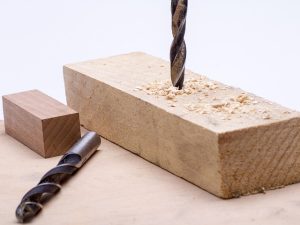
A drill bit is a rotary cutting tool used in a wide range of industries. Featuring a circular cross-section, it’s used to create holes in workpieces and objects. You can attach a drill bit to a power drill, after which you can drill holes with it. As the drill bit turns, it will dig into the workpiece or object while simultaneously scooping out material. If you’re planning to buy a drill bit, though, there are several things you should consider.
#1) Flute Style
You should consider the flute style when choosing a drill. Some drill bits have straight flutes, whereas others have curved or twisted flutes. Flutes are grooves. They allow drill bits to remove material from the workpieces or objects in which they are driven. Drill bits with straight flutes are typically more precise, allowing for rounder holes. Drill bits with twisted flutes, on the other hand, are more effective at removing material.
#2) Gauges
Drill bits are available in different gauges. The “gauge” represents the thickness or diameter of a drill bit. As with most gauge-based measurement systems, a lower gauge number indicates a thicker drill bit. A low-gauge drill bit will be thicker and wider than a high-gauge drill bit.
Common drill bit gauges include the following:
- 1 (0.228 inches)
- 7 (0.201 inches)
- 11 (0.191 inches)
- 21 (0.159 inches)
- 29 (0.136 inches)
- 31 (0.120 inches)
- 40 (0.098 inches)
- 43 (0.089 inches)
- 50 (0.070 inches)
- 60 (0.040 inches)
- 70 (0.028 inches)
#3) Single vs Double Shank
Some drill bits have a single shank, whereas others have two shanks. The shank is the part of a drill bit that connects to the chuck of a power drill. It allows the chuck to hold the drill bit in place. All drill bits have at least one shank, but some of them have two. With two shanks, you can flip the drill bit if one side becomes dull.
#4) Material
One of the most important things to consider when choosing a drill bit is the material. Some drill bits are made of harder and more durable materials than others, making them ideal for equally hard workpieces and objects. Common drill bit materials include high-speed steel (HSS), cobalt and carbide.
#5) Point Angle
Something else to consider when choosing a drill bit is the point angle. The point angle is the angle of a drill bit’s point or tip. A 118-degree angle works well for soft workpieces and objects, whereas a 135-degree angle is better suited for hard workpieces and objects. Drill bits with a higher point angle like 135 degrees will resist “walking” across surfaces and, instead, will dig into objects.



